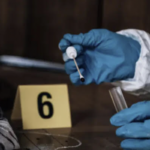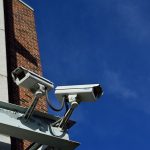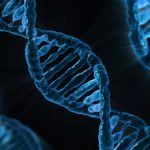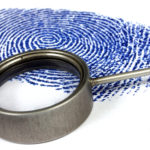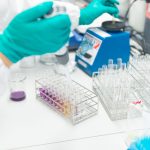Crime Scene Examinations: Police and Lab Bungles Can Lead to Acquittal
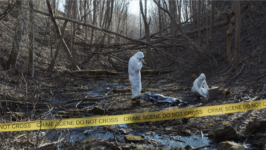
Key to any criminal investigation is the examination of the scene of a suspected crime, as well as the documentation and collection of evidence that has not been contaminated by those who have been there.
Here’s how scene of crime examiners and detectives interpret clues found at a scene to reconstruct what they believe happened.
Crime scene examination
Once identified, a variety of personnel may attend a suspected crime scene – including first responders, such as police and paramedics as well as detectives, who specialise in the investigation of crimes, and scene of crime officers (SOCOs), who are there to document the scene and its contents.
It’s crucial that the crime scene is secured to avoid any potential contamination of the scene. Contamination can be defined as the introduction (intentionally or accidentally) of something new to a scene that was not originally there.
A recent lesson on the risks of an unsecured crime scene can be found in Western Australian Scott Austic, who spent 12 years in prison for a murder he didn’t commit, only to be released in 2020 after it was discovered a knife purporting to be the murder weapon was planted at the scene.
Once secured, a crime scene is thoroughly examined to identify all potential physical evidence. Types of physical evidence to be identified at a scene, can include:
- Weapons including firearms and fired ammunition, knives, explosives, hammers and various other objects.
- Fingerprints,
- Tool marks, tyre tracks, and footwear impressions.
- Documents and money.
- Hairs, fibres, glass and paint fragments.
- Biological fluids including blood, semen and saliva.
- Bloodstain patterns.
- Drugs (both legal and illegal).
- Whole (or parts of) a corpse.
Latent or ‘hidden’ physical evidence can be visualised using various chemical and lighting techniques.
Prior to collecting evidence it should be documented in situ using photography or video, providing a ruler or some other scale. Sketches may also be used to document the relationship between different pieces of evidence.
All individuals attending the scene should be wearing appropriate personal protective equipment including gloves, booties, hair coverings, overalls and masks. This is designed to limit the degree of cross-contamination from examiners and investigators.
Collection methods for identified evidence depend on the type of evidence and its volatility in the environment.
Blood, saliva or semen collected for further forensic testing should be swabbed and (if possible) dried at the scene with the objects/clothing containing the biological material collected whole.
Hair, fur or fibres should be collected with tweezers and placed in paper bags.
Volatile substances (such as petrol residue) should be collected quickly and stored in sealed containers to avoid loss of evidence.
Prints and impressions (such as tyre or tool marks) should be documented in situ and either lifted or molded to preserve distinct patterns.
The 2D patterns of marks and impressions can be preserved by close photography at the scene. 3D patterns can be molded using Plaster of Paris or 3D scanning and printing technology.
Finally, fingerprints can be visualised using powders or chemical treatment, photographed at the scene and lifted with tape for analysis.
Crime scene reconstruction
Crime scene reconstruction refers to the use of deductive and inductive reasoning to draw inferences from pieces of physical evidence left at a scene.
Inductive reasoning begins with specific information to form a theory. For example, noting that a door has been damaged and left ajar at a murder scene, could be used to infer (inductively) that the perpetrator forcefully broke through the door to attack the victim.
Deductive reasoning is the inverse, relying on a general theory (or observation) to infer a specific event occurred. For example, if many victims of knife attacks sustain injuries on their hands trying to thwart an attack (called “defensive wounds”) similar looking wounds on the murder victim are consistent with a stabbing attack.
Inferences occur as evidence is gathered throughout a criminal investigation (physical evidence, statements from witnesses, CCTV footage etc) and help form a hypothesis about what occurred. This hypothesis must be tested against all pieces of evidence gathered and adjusted if inconsistencies arise.
For example, a hypothesis about cause of death could be developed through reasoning about:
- The location and state of the body;
- Indications of a struggle, including furniture or other objects overturned or damaged, body found in a location consistent with an attempt to flee, defensive wounds present;
- The presence of weapons at the scene; or
- Blood stain patterns at the scene.
Crime scene reconstruction is a highly subjective process with detectives and examiners prone to various cognitive biases. Some common biases include:
- Expectation bias: where the expectation influences what is actually found.
- Confirmation bias: closely related to expectation bias, whereby people test hypotheses by looking for confirming evidence rather than for potentially conflicting evidence.
- Motivational bias: where, for example, motivational influence on decision making results in information consistent with a favoured conclusion tending to be subject to a lower level of scrutiny than information that may support a less favoured outcome.
Laboratory forensics
In many cases, physical evidence collected at a crime scene will be analysed in the laboratory.
The types of analysis performed by forensic specialists are broad, and new techniques are being developed every day. Some commonly used lab-based forensic techniques include:
- Hair and fibre comparison.
- Identifying illicit drugs and forensic toxicology.
- Fire and explosives investigation.
- Ballistics.
- Paint, soil and glass analysis.
- Mark and impression analysis.
- Fingerprint identification.
- DNA profiling.
- Examining a corpse and the role of the Forensic Pathologist
- Forensic entomology
Two key principles underpin the method and practice of modern forensic science: the principle of exchange and the principle of individualisation.
The principle of exchange states that no one can commit a crime without leaving behind numerous signs of it. The perpetrator of a crime, will either leave something at the scene or take something of the scene away with them.
The principle of exchange means there will always be a connection between criminal and crime scene, making identifying and preserving physical evidence at the scene a high priority for criminal investigations.
The principle of individualisation refers to a process where a forensic expert concludes a specific source of origin for physical evidence, guided by the insights of science.
Uniqueness is a key feature of the principle of individualisation. For example, the fact that it’s highly unlikely that one person’s fingerprint or DNA profile will be exactly identical to another person (excluding identical twins for DNA) allows forensic experts to infer that a particular person is the source of biological material (an individual characteristic).
The principle is also applied to less clear cut forms of comparison. A shoe impression left in soil can be compared to the shoes of a suspect and presented as evidence that they are its origin.
This is a class characteristic, rather than an individual one, as the scientist can usually only conclude that the two impressions are of the same class (a shoe of a particular make or brand).
The strength of a claim of individualisation depends greatly on the reliability of a technique and the uniqueness of the features identified.
Laboratory-based forensics depend on the validity and reliability of the technique, as well as the potential for cross-contamination or errors within the laboratory.
In 2009, 23-year old Farah Jama was released after spending nearly two years imprisonment for a rape he didn’t commit as a result of lab-based cross contamination.
In 2005 a 28-year-old women, woke up in a Melbourne nightclub with no recollection of what happened to her. The alleged victim was examined by a Sexual Assault Crisis Care Unit within a hospital for a physical examination. Routine swabs were taken and sent to the Victoria Police Forensic Science Laboratory for DNA analysis. The lab results came back with a “match” for Farah Jama.
When questioned by police, Jama insisted he was at his father’s bedside on the night of the assault. Moreover, no eyewitnesses on the night– which was filled with middle-aged Caucasian people – could recall seeing a young, very tall African man at the nightclub.
Prosecutors eventually reviewed the DNA evidence which was used to convict Jama and discovered that his DNA had mistakenly been identified as coming from the alleged victim of the nightclub assault, when it had in-fact come from an unrelated matter the day before.
On 7 December 2009, the Victorian Court of Appeal acquitted Jama of the sexual assault offence on the basis of this lab error.
Going to court for a criminal matter?
If you are going to court over a criminal case, call Sydney Criminal Lawyers anytime on 9261 8881 to arrange a free first conference during which one of our experienced defence lawyers will assess the case, advise you of your options and the best way forward, and fight for the optimal outcome.

